2019 Toyota RAV4: From Cute Ute to This

While the fourth generation of Toyota’s RAV4 contained a touch of menace, the model has always been an easygoing compact utility vehicle. When it hit North America in 1995, it didn’t have a lot of competition. General Motors’ collaboration with Suzuki resulted in a bevy of micro SUVs that weren’t spacious or comfortable enough to compete with Toyota’s compact crossover. Likewise, a lot of consumers found it made more sense to purchase something that was more capable on pavement than off-road, and the Corolla-based ute definitely fit the bill.
Two decades later and the RAV4 now has more than its fair share of competition, yet remains totally relevant. In fact, it spent most of 2017 beating the snot out of the Honda CR-V and Nissan Rogue to retake its place as America’s best-selling small SUV — a miraculous feat considering the current generation has been around since 2012.
While Toyota could probably keep selling them unchanged at ludicrously high volumes for another two years, the time has come for a redesign. The automaker absolutely has to hit a home run; the RAV4 is Camry levels of important at this point. It may not have the sedan’s history, but it has the numbers — and with the crossover craze stronger than ever, it absolutely has to be a unmitigated success.
Toyota said it took special care to listen to its customers and dealer network to ensure this happens, which is something you don’t hear companies say about their products that much anymore. Sure, we know automakers spend an obscene amount of cash on market research. But their opening arguments for why you should buy typically revolve around having the most pimped-out tech and hardware — not an emphasis on customer satisfaction. That’s okay, as the 2019 RAV4 appears sufficiently pimped.
The only exception to this is the bodywork. Toyota appears to have harkened back to the vehicle’s roots. It’s arguably less angry looking than the current generation, which is fine with us. Scowling headlamps are not the pinnacle of automotive design and, while the new RAV4 maintains a strong dose of attitude, it drops the squinty grimace. It also looks more like an SUV than its predecessor, thanks to a flatter face and a more traditional grille.
Toyota also resisted the urge to upsize the model, something that has become extremely common among smaller vehicles. The 2019 RAV4 is 0.2 inches shorter in both length and height. However, it’s 0.4 inches wider and the wheelbase has been stretched by 1.2 inches. That means shorter overhangs and, theoretically, more off-road prowess when handling rugged terrain. Swapping from the New MC to the TNGA platform also increased body rigidity by around 57 percent, according to the automaker.
We’re willing to bet most people will keep their RAV4 on the pavement and consign their sporting urges to the occasional stoplight blast. For that, they have two powertrains to choose from. The base option is a 2.5-liter inline-four VVT-iE mated to an eight-speed automatic. However, Toyota will also deliver a 2.5-liter hybrid system (THS II) for those seeking added performance (and who don’t mind a CVT). Transmissions aside, Toyota claims the RAV4 XSE Hybrid is the way to go for driving dynamics. It did not, however, provide any metrics on either of those powertrains. We’re expecting something around 200 horsepower and 180 lb-ft of torque from the 2.5-liter without hybridized help.
All-wheel-drive versions of the solely gasoline-powered Limited and Adventure trims come with torque vectoring and rear-driveline disconnect. That ought to improve highway mileage a bit while simultaneously improving handling at the limit — be it on a slippery highway entry ramp or dusty trail. Toyota says limiting rotational vibrations also makes for smoother cruising.
Lesser RAV4s can still have all-wheel drive, but it comes sans torque vectoring. Meanwhile, the hybrid models get an improved version of the current RAV4’s AWD-i system. The average shopper is unlikely to notice, but those intent on wringing out the XSE — which comes with “tauter shock absorbers and springs” — may appreciate it.
Small improvements abound. Side mirrors have been lowered to improve forward visibility, every non-hybrid AWD model now comes with terrain-select as standard, and Toyota says it has taken great strides to improve interior ergonomics while improving rear passenger comfort. We’ll wait to confirm that (Toyota has been solid on quality but hit-and-miss on ergonomics as of late).
Bigger changes include the standardization of Toyota’s Safety Sense 2.0 — which adds pre-collision braking with pedestrian detection, adaptive cruise control (capable of speeds up to 110 mph), lane departure warnings with steering assist, lane tracing, road sign assist, and automatic high beams. The automaker also chucked in Etune 3.0 for the 7-inch center display, with Wi-Fi connectivity, Apple CarPlay, and even Amazon Alexa. Some extra dough will an another inch to the center screen, plus Sirius XM, extra USB ports, wireless device charging, a JLB audio system and on-board navigation.
Overall, it seems Toyota really did a number on the fifth-generation RAV4 without betraying what it was. It also sounds like it has created a strong base to build upon and intends to outfit the higher trims in meaningful ways that will differentiate them by their intended purpose: Adventure (off-road), Limited (luxury), XSE Hybrid (sport and style). But we’ll have spend time with each to see if that’s really the case. Most will be on display at the New York International Auto Show and we fully intend to “get up in them guts” this week.
[Images: Toyota]

A staunch consumer advocate tracking industry trends and regulation. Before joining TTAC, Matt spent a decade working for marketing and research firms based in NYC. Clients included several of the world’s largest automakers, global tire brands, and aftermarket part suppliers. Dissatisfied with the corporate world and resentful of having to wear suits everyday, he pivoted to writing about cars. Since then, that man has become an ardent supporter of the right-to-repair movement, been interviewed on the auto industry by national radio broadcasts, driven more rental cars than anyone ever should, participated in amateur rallying events, and received the requisite minimum training as sanctioned by the SCCA. Handy with a wrench, Matt grew up surrounded by Detroit auto workers and managed to get a pizza delivery job before he was legally eligible. He later found himself driving box trucks through Manhattan, guaranteeing future sympathy for actual truckers. He continues to conduct research pertaining to the automotive sector as an independent contractor and has since moved back to his native Michigan, closer to where the cars are born. A contrarian, Matt claims to prefer understeer — stating that front and all-wheel drive vehicles cater best to his driving style.
More by Matt Posky
Latest Car Reviews
Read moreLatest Product Reviews
Read moreRecent Comments
- Lou_BC Well, I'd be impressed if this was in a ZR2. LOL
- Lou_BC This is my shocked face 😲 Hope formatting doesn't fook this up LOL
- Lou_BC Junior? Would that be a Beta Romeo?
- Lou_BC Gotta fix that formatting problem. What a pile of bullsh!t. Are longer posts costing TTAC money? FOOK
- Lou_BC 1.Honda: 6,334,825 vehicles potentially affected2.Ford: 6,152,6143.Kia America: 3,110,4474.Chrysler: 2,732,3985.General Motors: 2,021,0336.Nissan North America: 1,804,4437.Mercedes-Benz USA: 478,1738.Volkswagen Group of America: 453,7639.BMW of North America: 340,24910.Daimler Trucks North America: 261,959




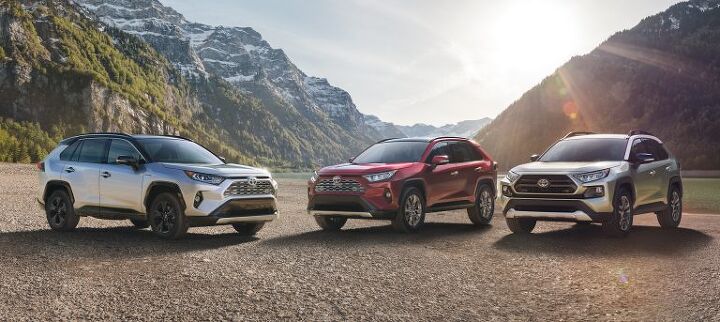
























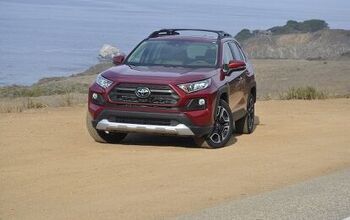
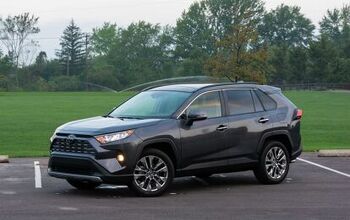
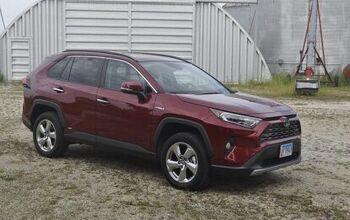
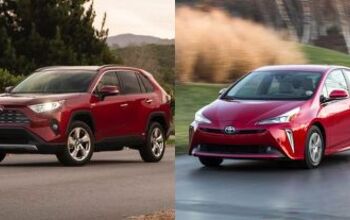










Comments
Join the conversation
>>In fact, it spent most of 2017 beating the snot out of the Honda CR-V and Nissan Rogue to retake its place as America’s best-selling small SUV — a miraculous feat considering the current generation has been around since 2012.
And here I thought the ugliest RAV4's were behind us.....